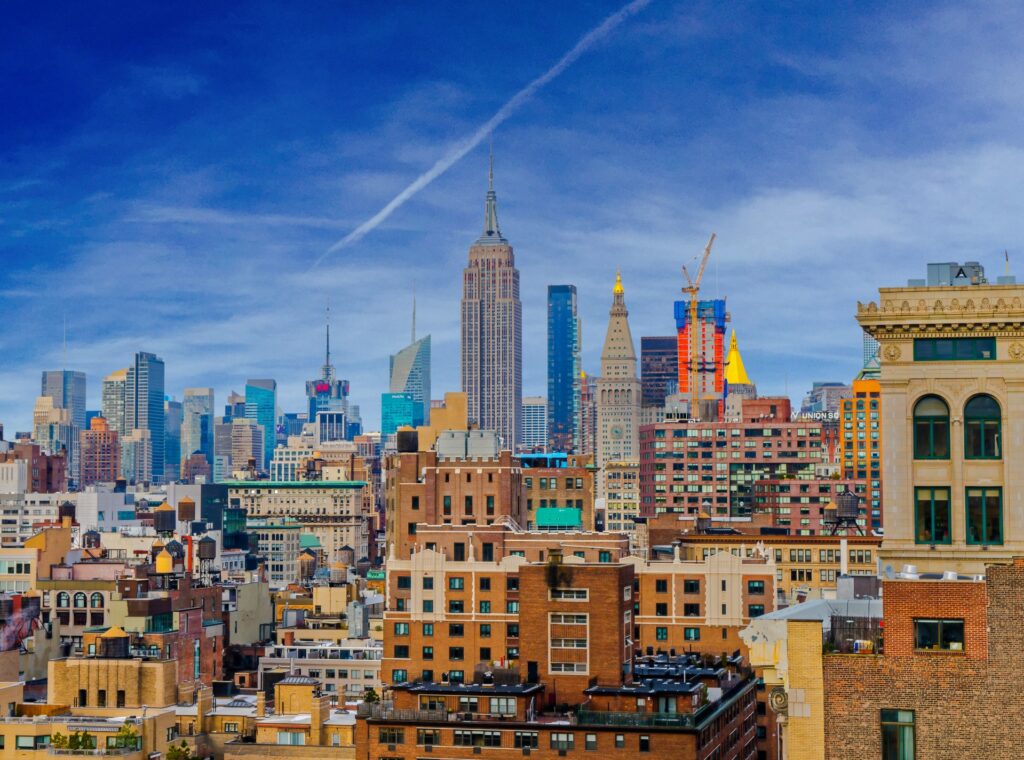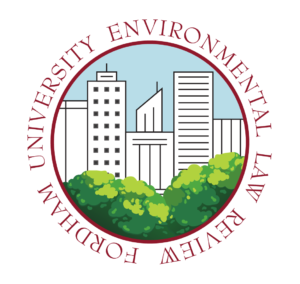NYC Local Law 97: A Critical Tool Against Climate Change
By Roberto Leito, Class of ’26

In May 2019, the New York City Council passed Local Law 97 as part of the landmark New York City Climate Mobilization Act. Arguably the Council’s most progressive environmental legislation, the law takes effect in January 2024. It will set benchmark greenhouse gas emissions and energy efficiency regulations for buildings over 25,000 square feet. The rules are set according to each building’s 2006 emissions output: a 40% citywide reduction by 2030, and an 80% reduction by 2050. Emissions caps become stricter every four or five years between 2024 and 2050. Beginning in May 2025, buildings must submit annual emissions reports to ensure compliance. Buildings found non-compliant in a given year will pay penalties equivalent to each ton of carbon exceeding the limit, multiplied by $268. Over 50,000 residential and commercial buildings will be covered by the law.
Local Law 97 is the progressive legislation New York City needs to achieve carbon neutrality. Buildings account for nearly two-thirds of the city’s carbon footprint. Compliance will encourage investment in new technologies like solar energy, battery storage, and building electrification. More energy-efficient buildings reduce operating costs for their inhabitants. Investing in environmentally friendly upgrades makes building and apartment units more marketable to buyers and renters. Most importantly, the law will boost efforts to combat climate change, as hotter temperatures and rising sea levels threaten the city’s residents, infrastructure, and its very existence.
Despite Local Law 97’s undeniable benefits, real estate developers and building owners object to the expected financial penalties for noncompliance. According to the Real Estate Board of New York (REBNY) 3,700 properties will face $200 million in accrued fines by May 2025 due to noncompliance with the law. REBNY reported that this number will increase to 13,500 properties, with penalties of $900 million annually by 2030.
Opponents have taken several actions to block or delay the law. In September, Democratic Council Members Linda Lee and Sandra Ung proposed a bill to delay the implementation of Local Law 97 by seven years and change the emissions calculation formula. The Council referred the bill to the Committee on Environmental Protection, Resiliency and Waterfronts, where it remains. Cooperative owners filed a lawsuit in New York County Supreme Court in May 2022, Glen Oaks Village Owners, Inc. v. City of New York, to enjoin the city from implementing the law. The plaintiffs argued that the penalty system is impermissibly vague and ambiguous and violates their 14th Amendment due process rights. The court granted the city’s motion to dismiss and disposed of the case on October 27, 2023, dealing a blow to the law’s challengers. The plaintiffs intend to file an appeal.
Some environmentalists even argue that the law includes a loophole: allowing the purchase of renewable energy credits (RECs) to offset building emissions. RECs are certificates representing one-kilowatt hour of renewable energy delivered to the power grid; they support the development of renewable energy projects. These environmentalists argue that building owners can purchase enough RECs to circumvent tightening emissions restrictions.
The law’s detractors fail to recognize how it applies exceptions and how the city has developed proposed rules and programs to address potential inequities in its implementation.
The amended version of Local Law 97, in Sections 28-320 and 28-321 of the City Administrative Code, includes exceptions for buildings with over 35% rent-regulated units, certain houses of worship, New York City Housing Authority buildings, and federal housing projects. It does not exempt these building types but instead allows them to implement specific prescriptive energy measures by the May 2025 compliance report deadline or demonstrate that emissions levels meet 2030 standards.
Despite initial forecasts that 20% of buildings would be noncompliant by January 2024, that number now appears to be much lower; about 11% of buildings are expected to be noncompliant, a sign that owners are actively working to comply with the law before its effective date. One reason for this improvement may be related to the Mayor’s Office of Climate & Environmental Justice’s compliance assistance program, the “NYC Accelerator.” The program has so far helped 5,000 buildings learn how to comply with Local Law 97. It provides free resources to stakeholders from private buildings, including compliance reviews, referrals to engineers, and possible financing opportunities for necessary improvements.
In its most recent September 2023 proposed rules, the NYC Department of Buildings presented the long-awaited “Good Faith Efforts” measure for Local Law 97’s penalty framework. Buildings may lower their financial penalties and extend the initial compliance deadline by two years if they complete three requirements, including a building emissions report, and one optional requirement, like submitting a decarbonization plan. Adjustments are allowed for non-profits, hospitals, landmarks, and buildings under financial hardship (mainly if the property has a city tax lien). Buildings cannot purchase RECs in the first compliance period, from 2024 to 2029.
New Yorkers are concerned with how the costs of energy and emissions upgrades will affect landlords and, thus, renters. Retrofit upgrades are estimated to cost building owners anywhere from $16-24 billion between 2024 and 2030. While this would create as many as 141,000 jobs to meet demand, I sympathize with New Yorkers already saddled with an ever-rising cost of living. As the law takes effect during the first compliance period, the City Council should examine how penalties affect the average renter or co-op owner.
However, the city has provided adequate solutions for buildings to comply with the law or mitigate the burden of added penalties. No matter the cost, Local Law 97 is a groundbreaking tool for New York to combat climate change and protect residents from its deadly effects.

